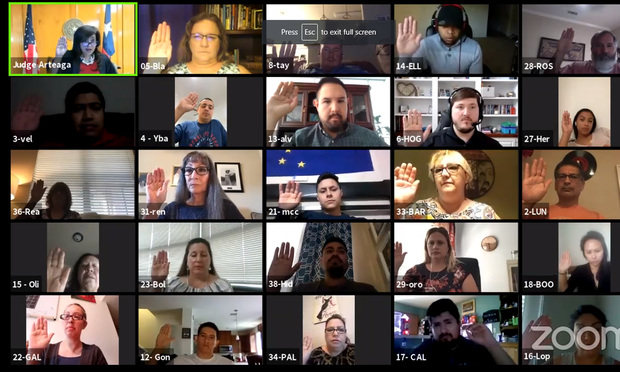Courts are struggling to find a way to hold proceedings in the safest way possible while still maintaining justice. Many courts have turned to Zoom and other video conferencing services to conduct hearings and other legal proceedings in an attempt to prevent the system from coming to a complete standstill. While bench trials, hearings, and even depositions have been conducted successfully via Zoom, the first binding criminal jury trial was held entirely via Zoom on August 11, 2020. We have now participated in two Zoom jury trials that went from jury selection through verdict. One was a mock trial in a civil case for the American Bar Association’s False Claims Act Virtual Trial seminar. The other was the aforementioned binding criminal trial, which was for a Class C misdemeanor charge. We wanted to embrace this technology as the future route for jury trials, but after participating in both groundbreaking trials, we simply cannot endorse it. Perhaps it can be used for small claims and Class C misdemeanors, but any trial of substance, whether the stakes are substantial damages or the potential for incarceration, it is simply not the vehicle to use to assure litigants of their Sixth and Seventh Amendment rights to a fair trial. We will leave it to the pundits, professors, and scholars to debate the constitutional implications of jury trials via Zoom. This article is going to address the practical and technological challenges associated with Zoom jury trials, and why it’s not only a bad idea, but a very bad idea.
Inequality of Access to Required Technology


 Judge Antonia “Toni” Arteaga of Bexar County’s 57th Civil District Court swears in a jury pool for virtual jury selection on Wednesday, Aug. 19, 2020. But the trial was delayed until Sept. 21, because no lawyers consented for their case to go to trial yet. Photo: 57th District Court YouTube channel
Judge Antonia “Toni” Arteaga of Bexar County’s 57th Civil District Court swears in a jury pool for virtual jury selection on Wednesday, Aug. 19, 2020. But the trial was delayed until Sept. 21, because no lawyers consented for their case to go to trial yet. Photo: 57th District Court YouTube channel




